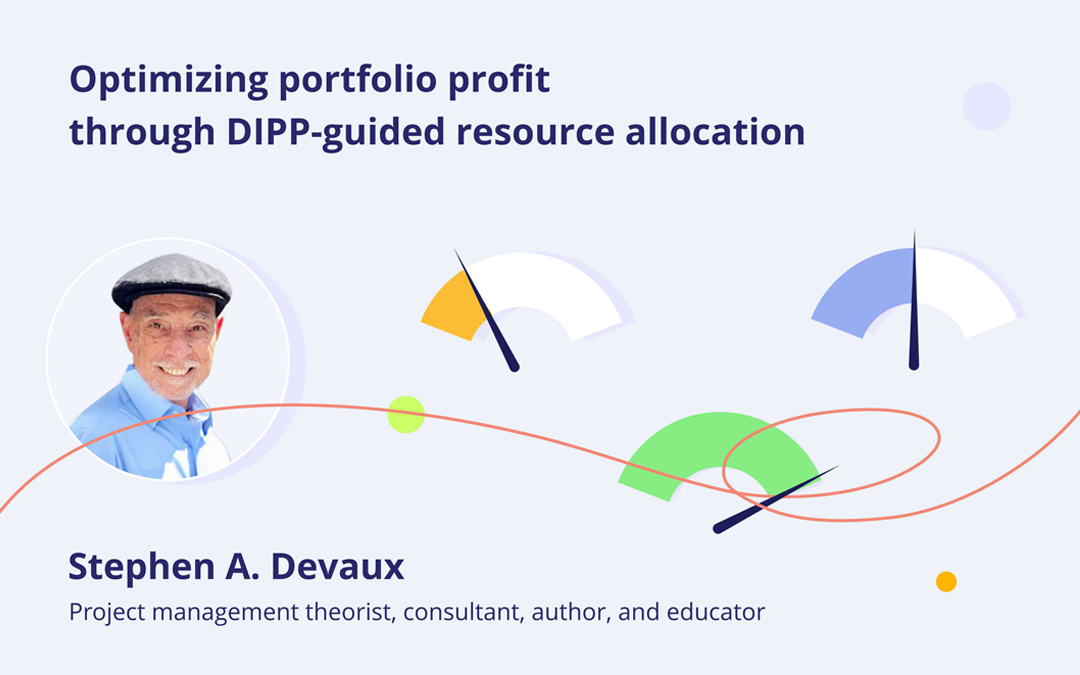Managing project portfolios is rather demanding in itself. In the aerospace and defense industry, it’s intensified by the specificity and complexity of the domain. A&D organizations mostly run large long-term projects with a lot of moving parts and globally distributed resources, which requires particular efforts to complete these projects successfully and achieve desired business outcomes.
What are the most significant challenges of project portfolio management in aerospace and defense companies? And how to overcome these difficulties with project portfolio management software? Let’s figure these issues out in the article.
Difficulties A&D Organizations Come Across When Managing Project Portfolios
Creating actionable project plans
As we mentioned above, projects in the aerospace and defense industry are often long-term and complex, which makes it difficult to plan them. There are plenty of things that can change in the process of project implementation, especially when we speak about the ones lasting for several years or even more – technologies are developing and quickly can become outdated, employees can change, not to speak of the economic and political situation and uncertainties that can affect project outcomes. Nevertheless, compiling project plans is an absolute necessity; otherwise, you’ll hardly be aware of the scope of work to complete, resources you’ll require, budget, etc.
Understanding the resource demand and supply
Ensuring that all upcoming projects are provided with the required human and material resources is one of the most demanding issues in project portfolio management, which is also relevant for aerospace and defense organizations. This becomes particularly challenging when it comes to bridging the demand and supply of human resources – you need to have a clear vision of available and required capacity to be able to staff projects with the necessary employees. But with hundreds of projects in the portfolio where thousands of people are involved, it’s really difficult to keep track of all this information and calculate the resource demand and supply correctly.
Read more: Resource Capacity Planning: What, Why, and How
Understanding priorities
When managing a project portfolio, it’s essential to prioritize projects in the right way so that they can deliver maximum value to an organization, and assign resources to the highest priority projects. Otherwise, the resources will be utilized inefficiently and the company will fail to achieve the desired outcomes.
It’s no less important to prioritize tasks for the team members. To be able to work productively on all tasks assigned to them, they should know which of them are critical for the moment. A lack of task priorities will result in bad multitasking, which reduces the efficiency of the project work and can lead to delays.
In large A&D organizations running hundreds of complex projects, setting the right priorities, assigning resources to suitable projects, and determining the highest-priority tasks becomes a real challenge.
Bringing the data on all resources together
The resources involved in aerospace and defense projects and programs are diverse. They can be people, equipment, facilities, or tools. In addition, the number of employees working on numerous projects is large and they can be distributed globally. Of course, it’s really challenging to keep track of all these types of resources and quickly find what you need at the moment. For example, when it comes to resource allocation, it can be difficult for a resource manager to quickly find the right person to assign to a task – i.e., an available employee with the required skills and enough capacity. At the same time, leveraging a variety of software tools to track all different types of resources is not always the right solution, as it doesn’t overcome silos and therefore can be ineffective.
Realizing bottlenecks before they become problems
A project portfolio is an environment where multiple simultaneous projects share the same resource pool. Under such conditions, timely detecting and resolving bottlenecks becomes critically important. Bottlenecks occur when resources cannot cope with their work when required, which hampers other people’s work. When unresolved, bottlenecks can pile up, affect other projects, and lead to much more serious problems – project delays and cost overruns.
Completing projects on time, within budget, and in line with customers’ expectations
As aerospace and defense companies often deal with large and long-term projects, one of their biggest concerns is being able to deliver them with expected outcomes – on time, within budget, and in line with customers’ expectations. There are a great number of factors that can negatively affect the successful completion of A&D projects – starting from numerous uncertainties and industry challenges to improper utilization of resources or project management mistakes, which can jeopardize the success of project outcomes. In addition, aerospace and defense projects often involve the application of innovative technologies, which can create additional risks for project implementation, e.g., it takes time for employees to master them or they may fail to bring the expected outcomes, etc.
Obviously, it will be impossible to overcome all the above-mentioned challenges without a functional PPM software that would keep all the required information, standardize all project-related processes, help set the right priorities, etc. So, in the next section, we’ll review how Epicflow, PPM software for aerospace and defense, can help A&D companies overcome their PPM challenges.
How to Overcome PPM Difficulties with the Right Software: Epicflow Solution

As a resource management solution with project portfolio management functionality, Epicflow enables successful management of project portfolios thanks to focusing on resource efficiency, correct prioritization, and data-driven decision-making. Let’s review how Epicflow’s key capabilities help overcome the PPM challenges of aerospace and defense organizations.
Determining the right priorities
One of the critical factors of successful project portfolio management is prioritizing projects in line with an organization’s business objectives. Of course, no solution can determine the business value of your projects, it’s up to a portfolio manager and a company’s leadership. However, in Epicflow, you can assign business value to every project of the portfolio, so that you can always keep track of them with regard to their priorities.
Previously, we’ve also mentioned the importance of task prioritization. In a complex environment with hundreds of tasks to work on, it’s impossible to prioritize them manually. At the same time, task prioritization is one of the main prerequisites for achieving employee efficiency. Epicflow can prioritize tasks across the whole project portfolio so that every team member always knows what to work on at the moment.
Uniting distributed resources
Epicflow brings the data on all resources together so that a resource manager can easily find it when needed, even if there are dozens of projects in the pipeline. First of all, the solution keeps the data on each employee’s competences, availability, and capacity, which is required for effective resource allocation. In addition to that, in Epicflow you can keep track of material resources required for projects – you can assign them to project tasks and/or monitor the consumption of materials. So, even if the project resources are distributed around the globe, all the required information is kept in one tool and easily accessible when needed.
Utilizing limited resources with maximum efficiency
As a rule, A&D companies have limited resources to implement their projects or project portfolios. In this case, wise resource management gains particular importance. Epicflow has the following tools that help organizations utilize their resources in such a way that all projects in the portfolio are delivered successfully.
- You can gain insight into resources’ future capacity with Epicflow’s Future Load Graph. Depending on your team members’ available capacity, you can decide on starting or postponing a project, hiring more employees, or training the existing ones.
Read more: Hiring Extra Employees vs. Adopting a Resource Management Solution: Сhoosing the Right Investment
- You can assign resources to tasks based on their skills, capacity, and availability. Epicflow not only keeps all this information easily accessible but also has a resource allocation advisor who can suggest an available person with the required competences and enough capacity. In large A&D organizations, it becomes a perfect solution for a resource manager who can select a necessary employee among thousands of others in a few clicks.
- You can track resource performance. Epicflow’s Historical Load Graph shows what output the team members have produced in relation to their capacity. In such a way, you can detect periods of reduced productivity, identify their causes, and fix the situation.
Read more: Tracking Performance: Switching from Project to Resource Level
Keeping track of every project in the portfolio
When running a portfolio of large and complex projects, it’s critically important to regularly monitor their state. Epicflow’s Pipeline shows a bird’s-eye view of your project portfolio. If some projects require attention, e.g., they have an unfeasible milestone and are going to be delayed, the system will immediately indicate it.
Overcoming the uncertainty of decision-making
When there are hundreds of projects in the pipeline, making the right management decisions can be tricky – there’s too much data to analyze and take into account, and there’s much uncertainty regarding the consequences of the decisions you make. That’s why, Epicflow has What-if Analysis feature that will help you make the right decisions backed up with data.
In its simulation mode, you can try out a variety of changes to the project portfolio. For example, how will the situation change if you add one more project to the portfolio? How many employees will you require to complete it? What will happen if you reassign resources? In addition, you can test different ways of addressing a bottleneck: e.g., reassigning resources, hiring extra people, moving the due date, etc.
Assistance in detecting and resolving bottlenecks and problem-solving
Detecting bottlenecks in the project portfolio with the naked eye is impossible. To detect them, you can analyze the previously mentioned Historical Load Graph and identify the resource groups with reduced productivity. After that, you can perform the Load Analysis to find out the periods of overload. Finally, in the What-if Analysis, you can test the best ways to fix the situation.
In addition to that, Epicflow features can help solve problems in the workflow. For example, if you see that you won’t be able to complete all projects in the portfolio on time, the Project Staggering feature will help you postpone the projects with lower priority for later. As a result, your resources will focus on the highest-priority projects and deliver them on time, which will positively impact your organization’s business outcomes.
This was a quick look at Epicflow’s functionality facilitating effective management of project portfolios in aerospace and defense organizations. If you want to dive deeper into Epicflow’s portfolio management capabilities and learn how to manage your project portfolios and achieve desired business outcomes, don’t hesitate to contact our experts.







